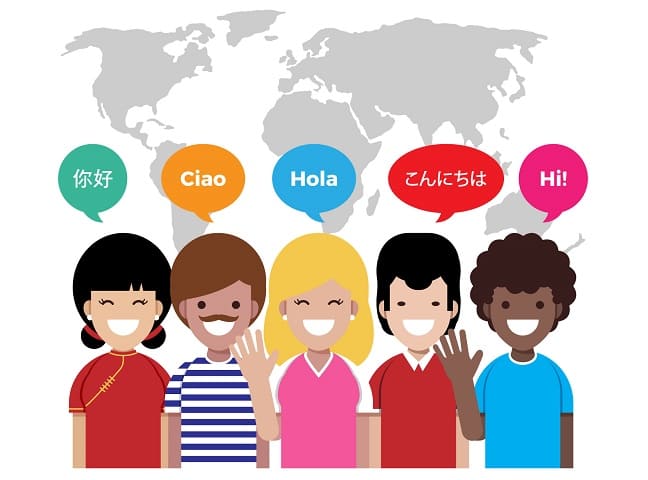Online surveys have become an essential tool for companies wanting to collect accurate data on their customers and prospects. However, conducting international studies raises many challenges related to linguistic and cultural barriers. How can we overcome obstacles related to cultural and language differences to obtain reliable data?
>> Visit Drag’n Survey to create an online survey, click here

The challenges of multilingual online surveys
The implementation of online surveys in multiple languages presents obstacles and difficulties that arise from the design of the survey itself.
Linguistic barriers
Linguistic barriers represent one of the main challenges in the design of multilingual surveys. Translating a survey into several languages requires specific skills to ensure that the questions maintain the same meaning in all linguistic versions. Translation errors can distort the results.
Cultural differences
Beyond language, each culture has its own way of understanding and interpreting questions. Some concepts may not exist in other cultures. Surveys must be adapted to be understandable by all, taking into account cultural differences that can impact responses.
Translation challenges
While machine translation is convenient, it can generate errors and awkward phrasing. Human translation provides more accuracy but requires significant effort when many languages are targeted.
Solutions to overcome the obstacles
Concrete solutions and best practices can help resolve and overcome challenges associated with multilingual surveys.
Choosing the right online survey platform
Opting for a platform that offers integrated translation tools makes creating multilingual questionnaires easier. Some solutions, like Drag’n Survey, allow for automatic translation of a survey into 24 different languages. It will then be displayed in the language corresponding to the user’s web browser.

Using automatic translation tools and human proofreading
Combining automatic translation with human proofreading ensures a good balance between speed and accuracy. Automatic translation, which is carried out directly from the survey software using an integrated tool, allows for the quick translation of the questionnaire into the desired languages. Having translations reviewed by a professional translator or collaborators ensures that cultural and linguistic nuances are respected.
Adapting the questions and survey format to different cultures
It is essential to adapt the wording and format of the questions for each target audience. For instance, some countries prefer rating scales out of 10 rather than 5. Survey designers must consider cultural differences in the structure of the questionnaire.
Best practices for collecting global data
There are several tips and tricks to ensure the quality and reliability of data collected through online surveys in different countries.
Test the survey before deployment
It is crucial to perform tests with representative samples from the targeted countries before launching the questionnaire on a large scale. This helps to ensure that the questions are understood in the same way by different cultures and to make necessary adjustments.
Use representative samples
Constructing representative samples for each country, in terms of age, gender, socio-professional category, etc., is essential to obtain reliable and generalizable data. The number of respondents per country should be proportional to the population size.
Account for differences in response rates
Response rates to surveys can vary greatly across cultures. These differences should be anticipated in the sampling plan, and the sample sizes adjusted accordingly, to ensure enough respondents per country.
The advantages of multilingual online surveys
Multilingual questionnaires offer benefits for businesses that are present or wish to expand internationally.
Access diverse and varied information
Multilingual surveys allow the collect of data from diverse populations, reflecting different opinions and behaviors across cultures. They provide rich information about differences and similarities between international markets.
Reach emerging markets
Translating surveys into local languages is essential for reaching respondents in new countries. It opens the possibility of collecting insights on emerging markets and expanding business activities there.
Gain a better understanding of the global market
With a multilingual survey, it is possible to gain a global understanding of needs and expectations at an international scale. The aggregated data provide an overview of global trends and local specificities.
Benefiting from multicultural data
Multilingual questionnaires are a real asset for companies looking to expand their international presence. Despite the inherent challenges related to linguistic and cultural barriers, it is possible to collect reliable and representative data on a global scale.
By adopting best practices—professional translation, questionnaire adaptation, rigorous sampling—brands can gain a deep understanding of their target markets. The resulting multicultural insights enable the refinement of marketing and commercial strategies at the local level.
When utilized effectively, multilingual online surveys are therefore a powerful lever for internationalization, opening the way to new growth opportunities abroad.
More about survey:
5 Alternatives That Rival Typeform, click here
The World of Multiple Choice Questions, click here
Demystifying the Net Promoter Score (NPS), click here
Top 7 Alternatives to JotForm for Form Building, click here
Crafting a Comprehensive Customer Satisfaction Survey, click here
Read the article:
French – Sondage en ligne multilingues, click here
Portuguese – Pesquisa online multilíngue, click here
German – Mehrsprachige Online-Umfragen, click here
